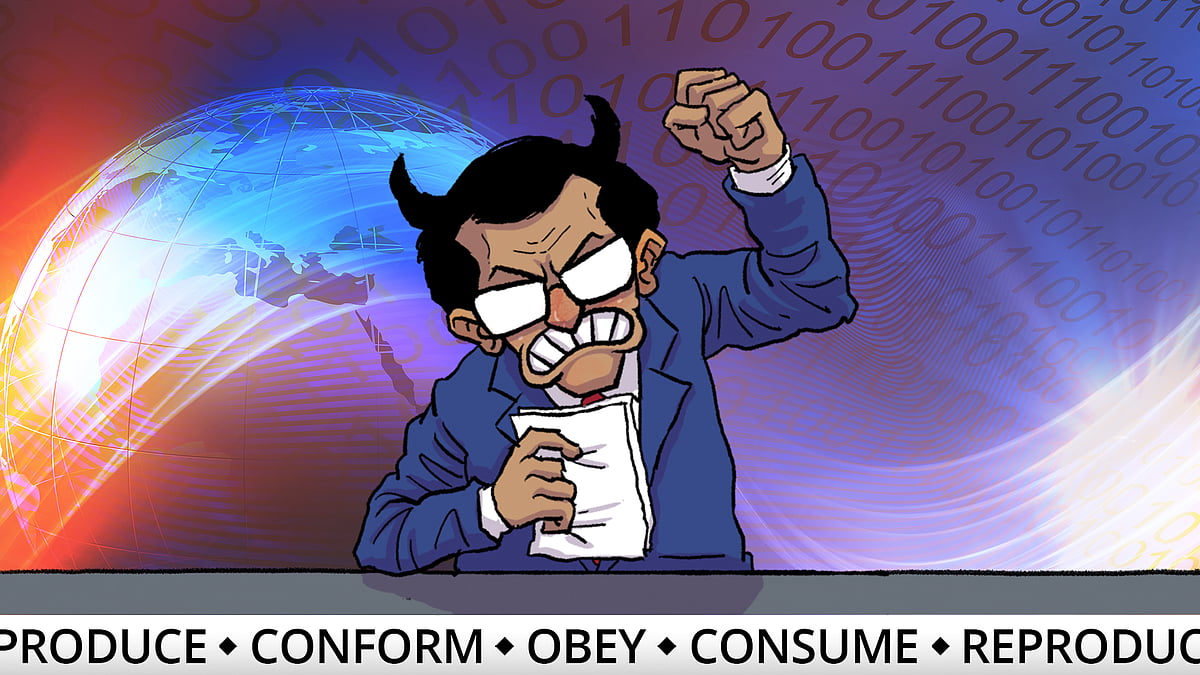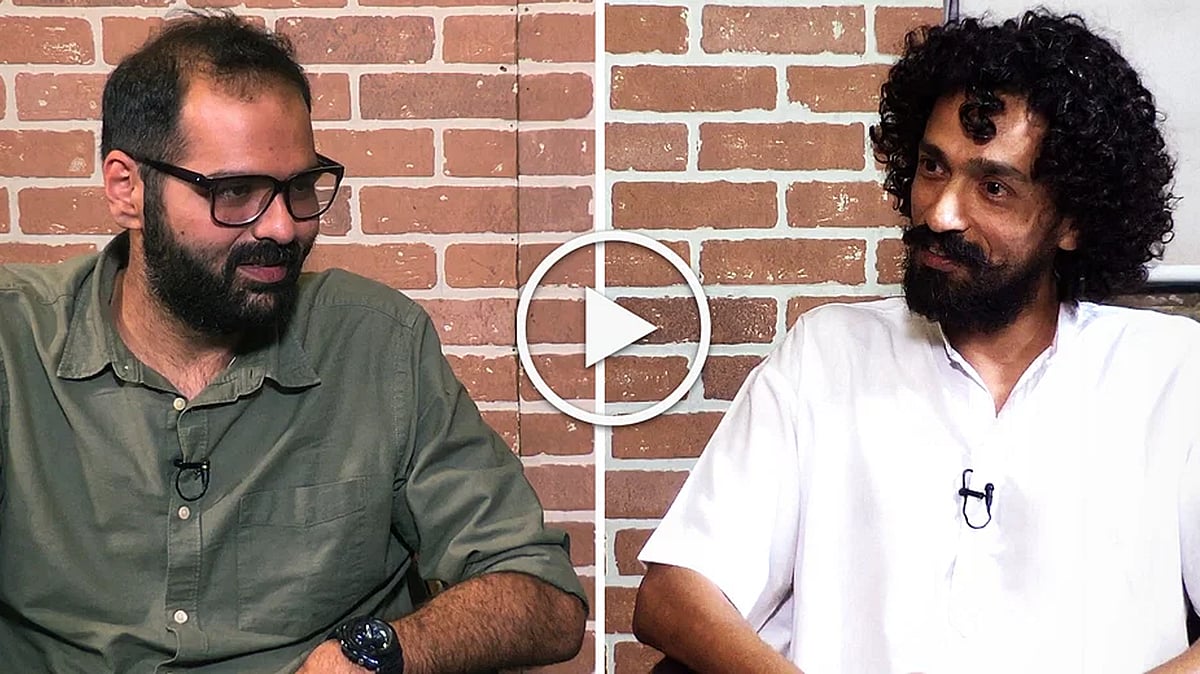On social media, hate speech is a quick ticket to stardom
Users with content that is insensitive, misogynistic and homophobic often have millions of followers.
Earlier this month, Shubham Mishra was arrested by Vadodara police for threatening to rape standup comic Agrima Joshua. Mishra had posted a video on social media, intended to be a “warning” against Joshua's alleged insulting of Chhatrapati Shivaji in a show more than a year ago.
Mishra's video was full of abusive language and lewd remarks directed towards Joshua, and was widely denounced on social media. He was arrested one day after the National Commission for Women took cognisance of the matter and issued a notice.
In a similar case, the Mumbai police arrested Imtiaz Shaik, who also made a video threatening Joshua. Shaik, who uses the pseudonym "Umesh Dada" on social media, has more than three lakh subscribers on YouTube. The videos posted on his channel are full of lewd, misogynist remarks directed at celebrities and journalists. He makes videos with supposed "warnings" — according to him, these warnings are directed towards people detrimental to national interest.
This style of video seems inspired by internet sensation Vikas Pathak, who goes by "Hindustani Bhau". Pathak is a social media star who was invited to appear on controversial reality TV show Bigg Boss last year as a contestant. Pathak is well-known for his unique style in making videos: he sits in a car and abuses a person as a "warning". This has earned him a huge follower base.
Various social media content creators tried to capitalise on Pathak's following and made him more famous by creating their own content featuring his style. Pathak became an overnight sensation, giving acceptance to the kind of “content” and “style” he uses. He now has more than three million followers on Instagram.
Pathak faced backlash for his style; YouTube banned his channel for being abusive. But that has not dented his popularity. Both Umesh Dada and Shubham Mishra imitated his video style.
Just before these incidents got traction, on July 1, Mumbai-based comedian Kenny Sebastian wrote on Twitter about the loss of content creators with the ban on Chinese app TikTok. A Twitter user with over 60,000 followers countered Sebastian's argument by using the slur "rice bag converts". This slur, used against Christians, is often used against Christian content creators from India.



It's ironic that people who resort to abuse on social media have large followings. Some show allegiances to the powers that be, and consider their acts and words justified by their popularity.
A few months ago, a debate on "YouTube vs TikTok" occupied social media. The context of the debate was a video roasting TikToker Amir Siddiqui. The video, which presumed that TikTokers "are not talented", was made by YouTuber Ajay Nagar, or "Carryminati".
The opening lines of the video included: "Fark nahi padta tumahara swad khatta hai ya meetha, tum star ban sakte ho." (It doesn’t matter whether your taste is sour or sweet, you can become a star.)
Ajay Nagar is a sensation for his roast videos. He has about 24 million followers and has been making videos since he was a teenager. One of his ardent followers is a 16-year-old student Rohan (named changed), who told this correspondent: "I watch his videos because ye meetha (homophobic slur used to refer gays) ki acche se leta hai (he doesn’t spare gays)."
Nagar's video was taken down. Other YouTubers like Ashish Chanchlani, Bhuvan Bam and Harsh Beniwal came out in support, while his followers posted hateful things against TikTokers.
It isn't just Nagar: YouTubers like Elvish Yadav and Lakshya Choudhary, who have millions of followers, often post content that is misogynistic, insensitive and homophobic. They call this content "a roast" — a form of humour where the subject of the joke is a guest on the show.
Interestingly, many social media stars, especially on YouTube, derive their support base from their caste, and often come into conflict with other castes for this reason.
'Hate' a shortcut to stardom
On social media, hate is a well-tested instrument to achieve stardom, given that social media platforms have a highly democratised way of functioning and an absence of well-defined policies. Users legitimise themselves through prejudices, hate toward a community, gender and even individuals.
Recently, retired army general GD Bakshi abused a fellow panellist on national television. Instead of backlash, he received a lot of support on various social media platforms. The incident speaks volumes of how hate is now a well-established tool to gather supporters and achieve stardom on social media sites.
A man who used to call himself Grandmaster Shifuji Shaurya Bhardwaj on Facebook and Twitter became famous; his content also circulated on WhatsApp groups. In many of his earlier videos — before he was exposed — he portrayed himself to be a high ranking army officer. Ironically, he was even invited to panel discussions on TV as an army officer for debates on crucial topics like surgical strikes.
Despite this, Bhardwaj is still followed by millions. He often abuses people, branding them “anti-nationals”. Even when he was trying to pass himself off as an army man, the only saleable product he had was hate and that has not changed.
Kamaal R Khan is another prominent name when it comes to hate-filled social media celebrities. He is an actor and producer, and now a film critic. He has been notorious for his comments, often in bad taste, but has more than five million followers on Twitter and more than half a million subscribers on YouTube. After the death of actor Sushant Singh Rajput, many celebrities, including Manoj Bajpai and Hansal Mehta, spoke against Khan for spewing hatred.
Khan derives his following from his bizarre opinions about Bollywood. He capitalises on his audience's obsession with the industry; people wait to watch his videos and his reviews of Bollywood movies and actors.



Meme and trend culture
Becoming an overnight sensation through internet memes is now a regular phenomenon. Meme culture seems harmless as it has a very short life span and is humorous. Memes like "Government Aunty" and "Nagarpalika Guy" make people famous.
Vikas Pathak too was made an internet sensation through these memes. Social media teams of various companies and individual content creators produced memes on him to capitalise on his overnight fame. Not only him, but various other social media stars are the result of this culture. It looks like some of these internet stars who are spewing “hate” are Frankenstein's monster.
The pressure on social media teams of various companies forces them to innovate. Being trendy even forces big social content creator companies to cross boundaries. Recently The Screen Patti, an online content creating company, made a video on TikTokers that was in bad taste and many viewers called it homophobic.
Absence of regulation
On social media, if something is objectionable, anyone can report it to the platform but it is up to the social media site to act upon it. It takes its own time and discretion to remove or keep such content. But there is no law that binds these social media platforms to act on the objectionable content.
In March 2018, the Observer Research Foundation released a study that was a statistical mapping of hate speech on social media pages. The study revealed that the most explicit basis of hate was “religious practices”. The study started in July 2016 and data was gathered from various social media pages during a two-month time period spread over 12 months. Most of the comment inciting hate was directed towards Indian Muslims.
In May this year, the French parliament passed a law asking social media companies like Facebook, Twitter and Google to remove hateful content within 24 hours of its posting. Content pertaining to terrorism and child pornography must be removed “within one hour”. Failure to comply will cost these companies fines of up to $1.36 million. But in India, no such law does not exist.
Time and again activists, lawyers have raised the issue of online hate but the debate fails to reach any fruitful conclusion due to fear of curbs on free speech by the government and concerns of privacy overshadows any debate over this topic.
In 2018, the Narendra Modi government announced that it was planning to amend Section 79 of the IT Act and make it mandatory to weed out “unlawful” content and trace the origin within 72 hours. The plan was dropped due to concerns over privacy.
As Maya Mirchandani, senior fellow at ORF and assistant professor at Ashoka University, wrote in an article: “Arriving at a regulatory mechanism is unlikely to be easy — a fact that is evident in the ongoing global debate, as different national governments cite their own legal frameworks to set precedent and seek control. But as hard as it may be, any regulatory framework that evolves will necessarily need to ensure that it not only protects the right to free speech in a democracy, but equally if not more so — creates safeguards and curbs against the impact and the process of online, social media amplification of hate speech that can lead to offline, real world violence.”
This piece was first published in Patriot.
 Harvesting hate: Indian TV is doing what Rwandan genocide trial warned us against
Harvesting hate: Indian TV is doing what Rwandan genocide trial warned us against NL Interviews: Abhinandan Sekhri in conversation with Kunal Kamra
NL Interviews: Abhinandan Sekhri in conversation with Kunal Kamra